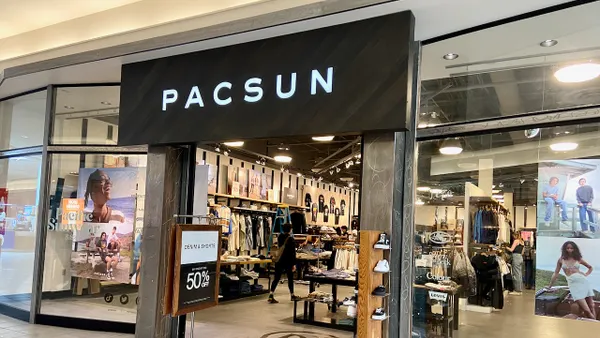Dive Brief:
- One in four small to medium-sized businesses (SMBs) report competition from Amazon and Walmart will drive their logistics strategy in 2020, according to a recent report from uShip, a shipping services provider.
- The "Amazonification" of retail, driving consumer expectations toward faster delivery, has become a struggle for smaller firms hoping to keep pace as they often have fewer financial resources and less infrastructure to match two-, one- and same-day speeds.
- Of the firms surveyed, 47% said they plan to increase shipping and logistics spend this year compared to 2019, with 20% choosing to invest in their logistics talent and 30% preferring to focus on new technology.
Dive Insight:
Amazon's promise of two-day delivery on Prime purchases began in 2005, and the timeline shortened to one day in 2019. Walmart quickly followed suit with one-day shipping offerings last year. The moves set a new bar for e-commerce delivery as retailers large and small entered the race to fulfill and ship orders to customers in 24 hours or less — a strategy that takes a robust logistics operation, and deep pockets, to pull off successfully.
The majority of SMBs ship with major carriers due to their relative reliability, affordability and capacity, which saves the burden of developing large-scale logistics infrastructures in-house, according to uShip's report. In recent years, FedEx and UPS have catered to the small business market with offerings such as fulfillment, reverse logistics and reduced shipping fees.
While more tailored carrier services might be attractive to SMBs looking to keep up with big box retailers, a study from Capgemini found faster shipping may not always be better. The firm tracked 507,873 FedEx and UPS packages shipped between January and March 2019 and found 6% of them were delivered late, 72% of which by at least a full day. Same-day and other rush shipping options had the highest rate of delays, according to the study.
"This can be primarily attributed to express shipping having to function within a tighter time window from pickup to delivery and the kind of transportation methods involved," LateShipment.com CEO Sriram Sridhar told Supply Chain Dive via email. "These shorter windows with short time padding on either end leave very little scope for recovery from mistakes, which results in a higher frequency of delays."
For small businesses with limited resources to spend, investing heavily in faster delivery speeds, only to risk more delays, could damage their budget and long-term reputation. In Capgemini's survey, 48% of customers said they would choose a different retailer after having a negative delivery experience.
UShip recommends businesses do their research on the carriers they choose, and their customers' priorities, when deciding how to invest in shipping speed and reliability.














